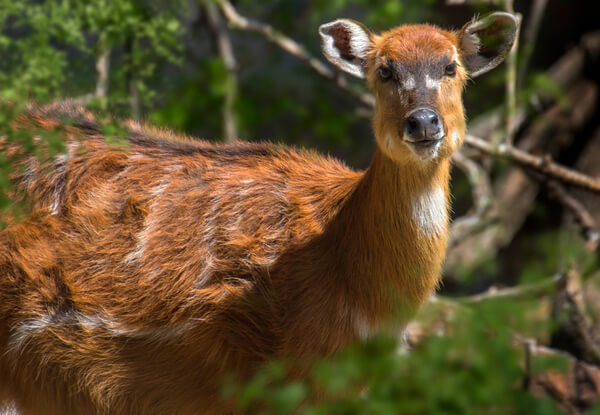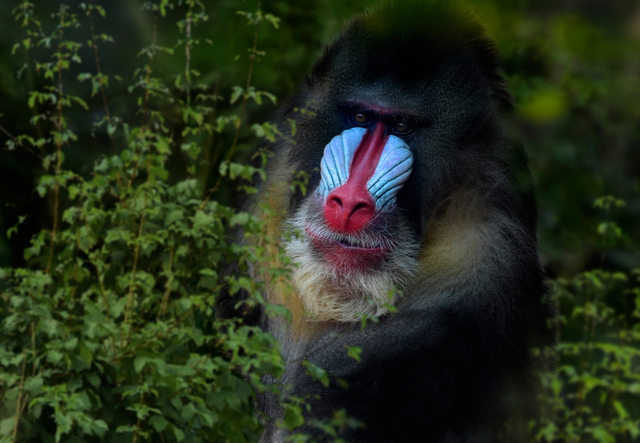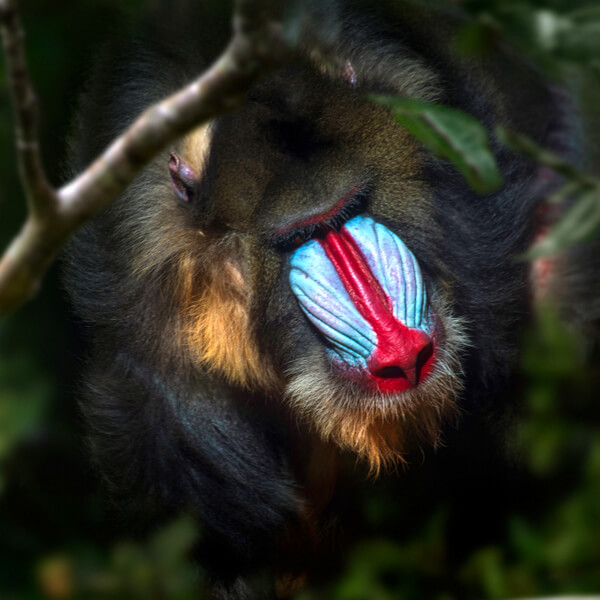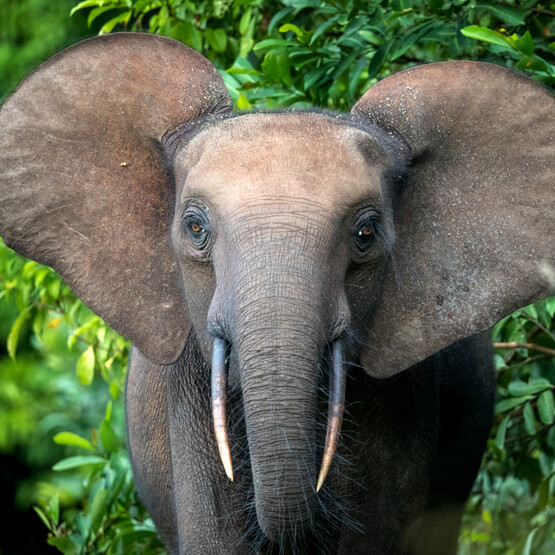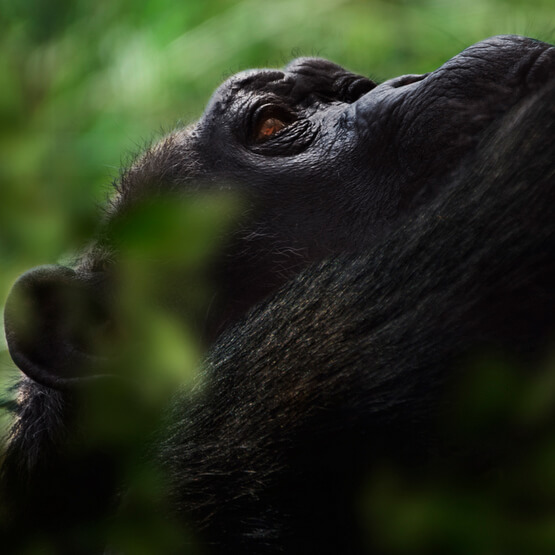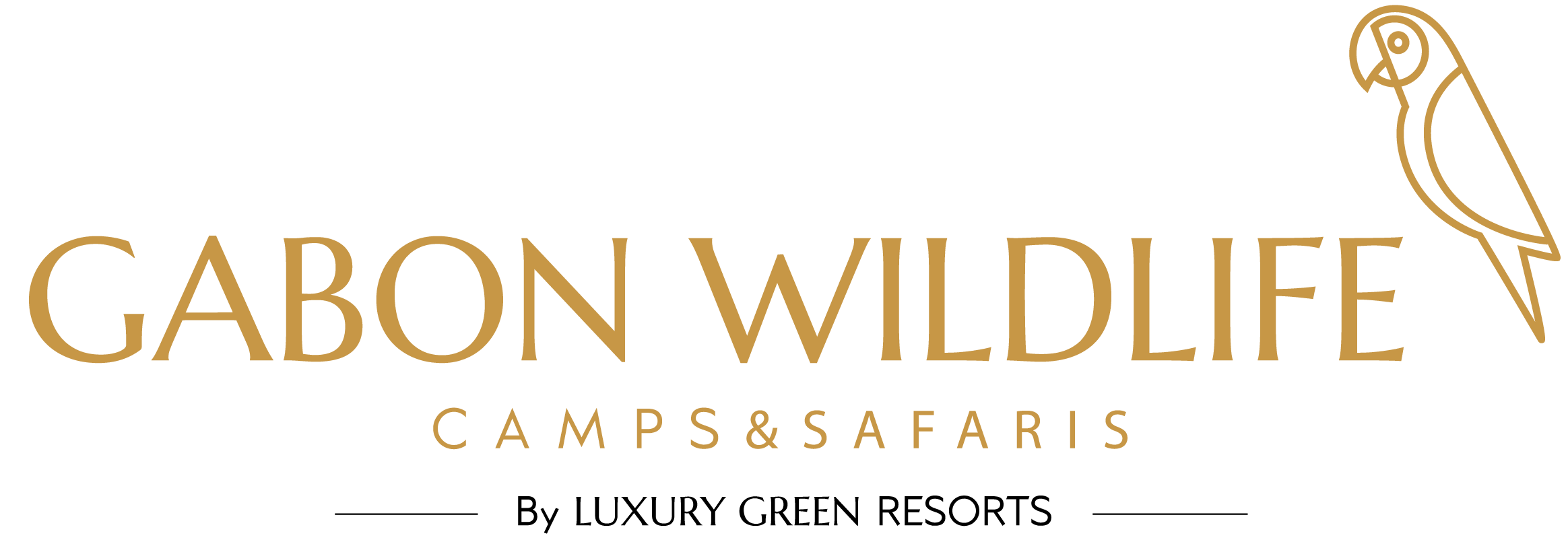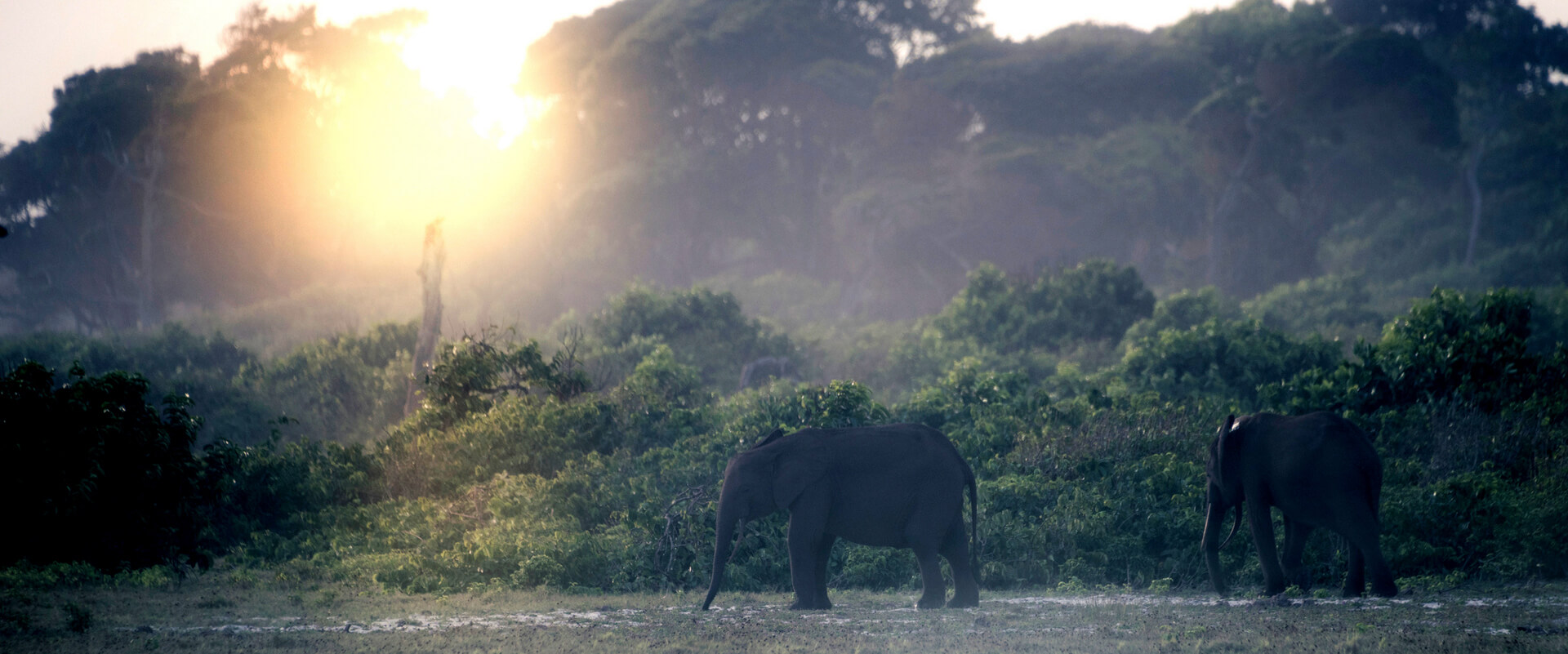
A walk on the wild side
The 13 national park network within Gabon spans 11 % of the country and includes 46,000km² [18,000 m²] of protected marine reserves — some the oldest and most ecologically significant in Central Africa. Idyllic locations that shelter Gabon’s Big Five game — the largest concentration of western lowland gorillas [approximately 35,000 in population], forest elephants [approximately 50,000 in population], mandrills [nearly 1400 ever recorded in any one mass gathering] chimpanzee [approximately 64,000 in population] and hippopotamus. And the magic continues out to sea with a spectacle of migrating humpback whales and nesting leatherback sea turtles.
But even more remarkable are the spellbinding landscapes and seascapes where a riot of other extraordinary wildlife flourish in virtual isolation. Birds, reptiles and mammals, both large and small that live in the rainforests, wooded forest galleries and savannahs. And along the labyrinth of coastal lagoons, rivers and quiet hidden valleys that nestle beneath ancient inselbergs and mist-laden mountains.
At the heart of your journey are our exclusively positioned low-impact tented camps and nature lodges, which are located in four major national parks; storybook places where something wild and magnificent is always waiting.
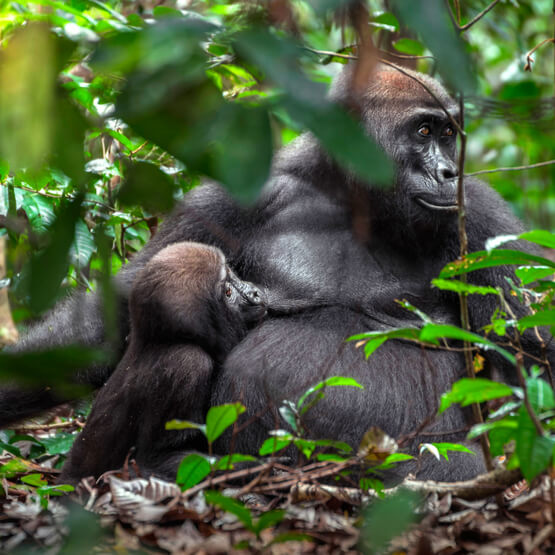
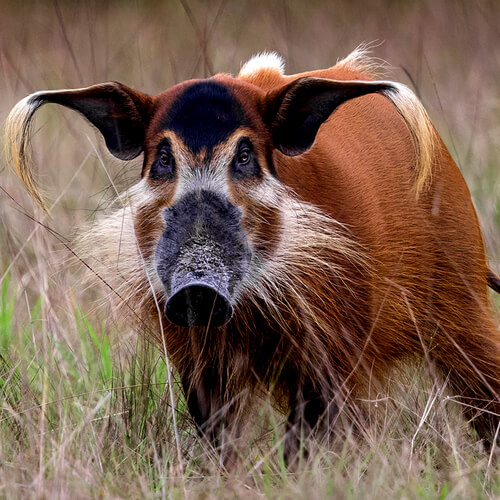
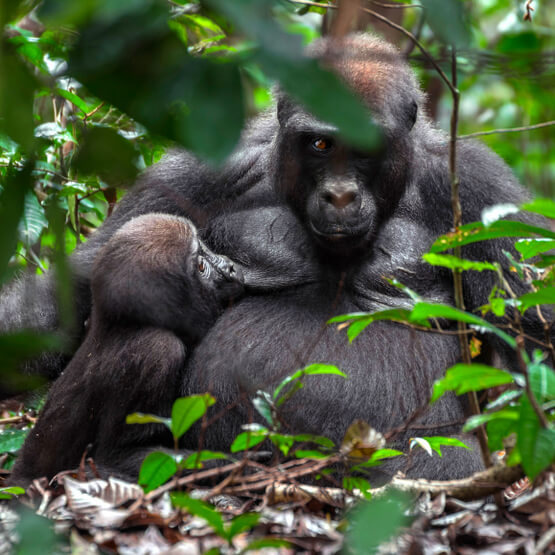
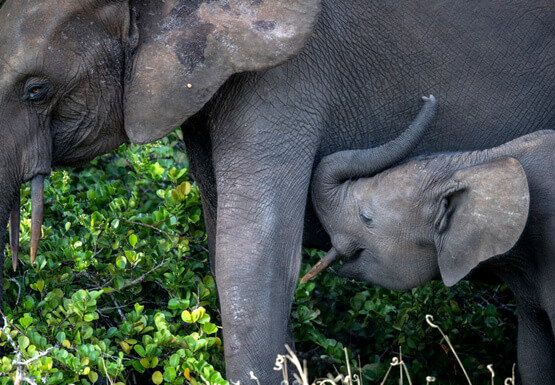
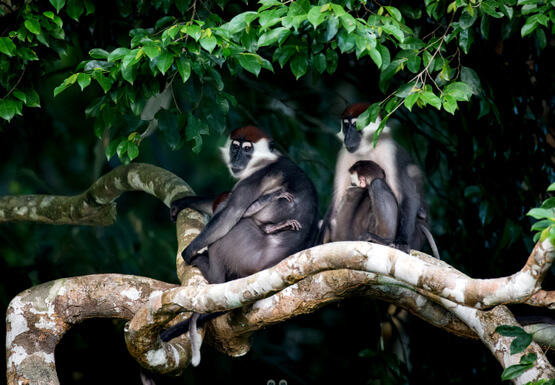
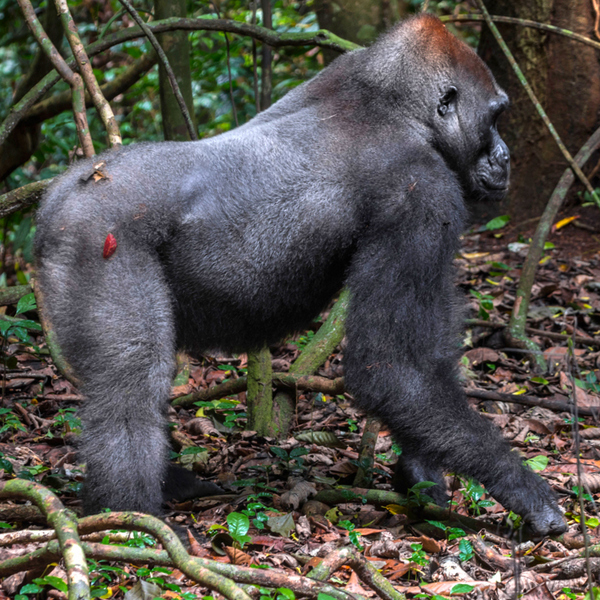
gorilla
The park forests of Gabon are home to over 30,000 western lowland gorillas; the most recorded in equatorial Africa. The smallest of all of the continent’s subspecies, their bodies are distinguished by their brown-grey hair, broad skulls and extended arms. But make no mistake. What they lack in stature — standing 180 cm when upright and weighing 180 kilograms — these gentle creatures are just as charismatic as their Ugandan cousins.
They come with their unique social structure; a stronghold [or troops] ranging from five to 12 individuals which varies due to their mortality rate, integration of new gorillas and the end of bachelorhood. Each troop also led by a dominant male called a silverback — named for the tuft of silver hair that grows down their hide. Deemed venerable taskmasters who make their own set of rules, the silverback determines the location of his troop’s nest, and when it’s time to eat, sleep, wake up and play.
Adding more weight, the silverback likewise makes a claim on his breeding rights; highly-prized harems comprising several females and their young. Though most coming-of-age males prefer to form new troops, some also stage a coup d’ état — the winner takes all.
Though placid in nature, they can also put on a display of hardline vocalisation and fearsome aggression when threatened — intimidating chest-pounding, forward lunges and smashing into bushes. If this happens, you must stand your ground and remain neutral. But respect is the name of the game along with the strict rules we have in place when viewing them in Loango National Park.
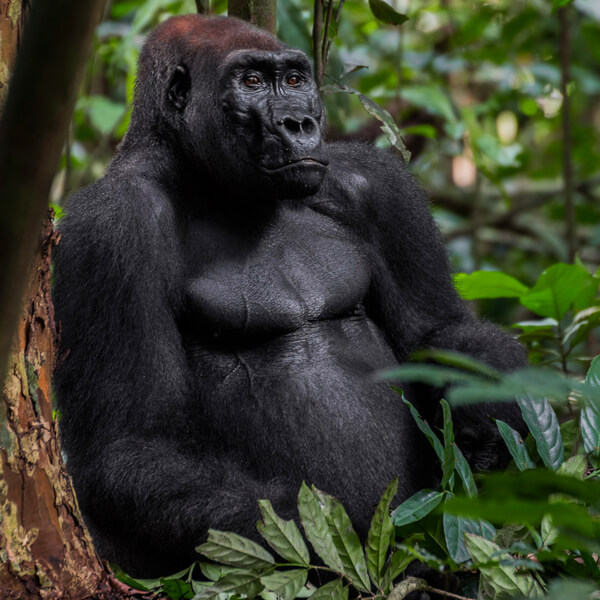

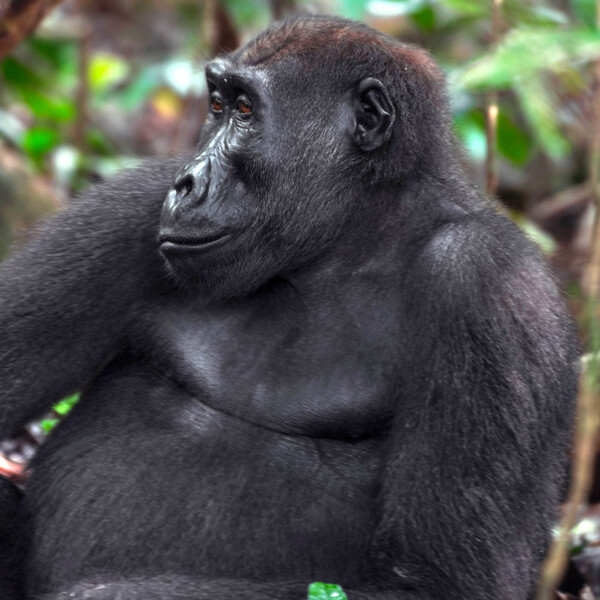
elephant
The The African forest elephant has long inhabited the dense forests of Gabon — some 1.7 million years, in fact! And along with their Southern African cousins, they are the planet’s largest land animals. Highly intelligent, forest elephants are capable of exhibiting powerful social bonds and deep emotions, and they also communicate through low-frequency or trumpeting sounds.
Bulls stand anywhere between 2.4–3.0 metres [7.9–9.8 feet] and weigh an equally impressive of 2–4 tonnes. They have large oval ears, tusks that point downward and sport five toenails [instead of four] on their front feet; four on the back feet. Another distinctive feature is their long trunks, which are used as a perpetual working machine — deploying over 60,000 muscles to communicate, defend the territory, grab food, dig for water, and strip bark and greenery.
Each herd usually comprises up to eight-12 individuals and cows only give birth every two to four years. But any new addition to the herd is a communal affair and elephants are known to grieve when one of their family members die. Matriarchs, in particular, play an essential role and females always live in family herds, though sexually-mature males roam more freely, especially to mate. Travelling up to seven kilometres a day [4.3 miles], forest elephants likewise move with the seasons across Gabon’s national parks and in turn, play a vital role in the germination and carving of rainforests. Today, over 50,000 flourish within Gabon’s borders — the highest density in all of Central Africa. They are to be revered.
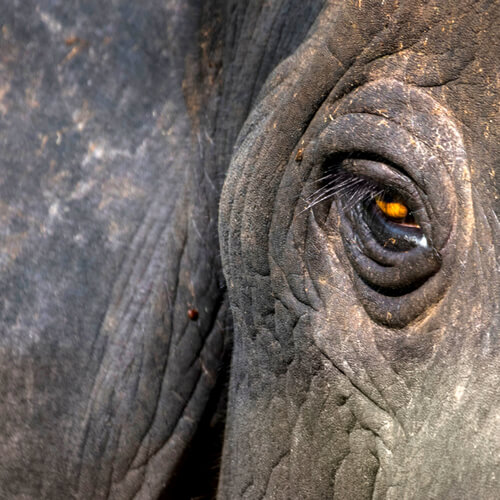
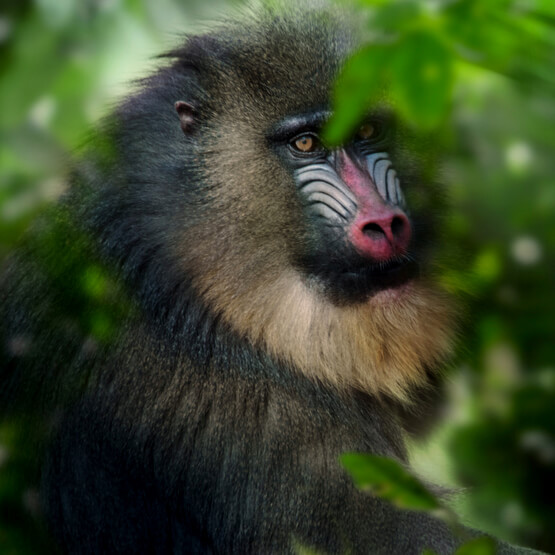
mandrill
Old-world monkeys have long inhabited the equatorial forests of Gabon. Of the largest of these species are mandrills, and one of the most distinctively colourful primates found in the world. Characterised by their striking red, blue and white nasal patterns, black-framed eyes, blue rumps and Herculean fangs, mandrills mostly congregate in hordes of anywhere up to 12 individuals but have also been known to amass in numbers of up to 200. The largest gathering saw over 1350 recorded in 1996.
Standing approximately 90 cm [3 feet] long and weighing up to 35 kgs [77 pounds], males make a formidable presence during the mating season with the largest dominating the horde. Their range of vocalisations and the baring of their teeth are equally impressive, which can measure up to 6.5 centimetres [or 2.5 inches] in length. Another remarkable anomaly is the built-in pouches found in their cheeks, which they use to store bite-size snacks after foraging on the ground.
Though primarily terrestrial, mandrills can also be found in trees when they take time out to sleep, hide from predators and feed on the leafy canopies. Most, however, stay low where they can forage for fruits, seeds and other tasty morsels including lizards, amphibians and insects. Yet the real game-play takes place during the mating season, and within six months of their lustful liaisons, their young are born. By the age of six, male mandrills break away from their maternal horde but chiefly stay within the boundaries so they can sire new off-spring and fight for dominance during the next mating season. And the brighter the face and rump, his place in the sun with the ladies is virtually assured.
